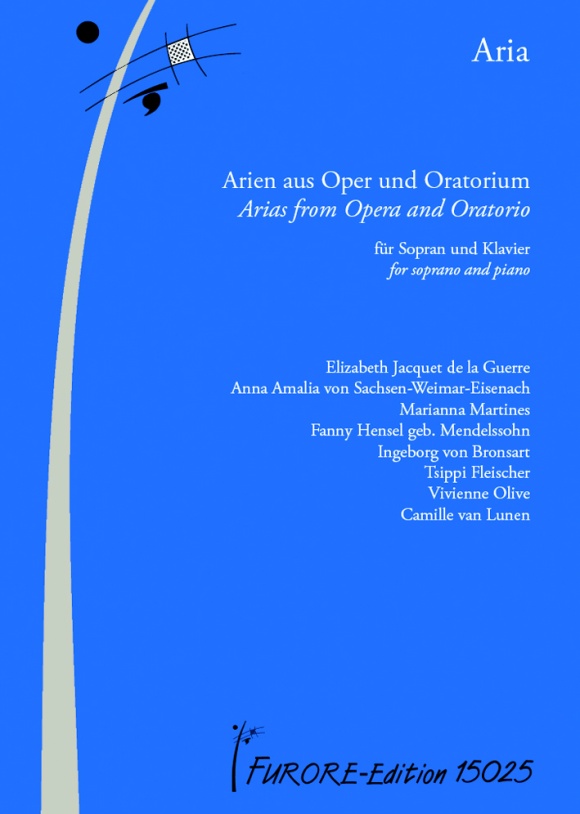Description
Anniversary Edition 1:
Aria. Arias from Opera and Oratorio for soprano and piano
Instrumentation: Soprano and Piano
Edition: score with biographies and notes on the work
Level of difficulty: easy to medium
Elizabeth Jacquet de la Guerre (1665–1729) : Lieux écartez, from: Céphale et Procris
Anna Amalia von Sachsen-Weimar-Eisenach (1739–1807): Ein Veilchen auf der Wiese stand, from: Erwin und Elmire
Marianna Martines (1744–1812): Qui tollis peccata mundi, from: Quarta Messa
Fanny Hensel geb. Mendelssohn (1805–1847): O daß ich tausend Zungen hätte, from: Lobgesang
Ingeborg von Bronsart (1840–1913): Endlich darf ich hoffen, from: Jery und Bätely, op. 16
Tsippi Fleischer (*1946): Do not weep for me, from: Cain and Abel, op. 57
Vivienne Olive (*1950): Ach, liebste Freundin, from: Das hässliche Entlein
Camille van Lunen (*1957): Er liegt nur halb anwesend da, from: Der Felsenjunge
Composing an opera has always been considered to be an ennobling process for composers. The
very choice of an appropriate subject was a challenge in itself. For many a composer, the subsequent
creative act ended in failure. All too often, they set their sights too high and despaired of
realising their vision. The dramatic or theatrical meaning of an opera is achieved through the interaction
of music, language, scene and gesture. The situations seen and felt by the audience play
a decisive part in its overall effect. In that respect, it is daring to extract an aria from its context,
for it is the easily understood contrast of musical episodes and scenes that determines its meaning.
On the other hand, the plot itself marks time while the action that has gone before is reflected
upon in the aria. This collection contains compositions that are of central importance to the further
development or to the understanding of the whole. The selection of arias presented here is devoted
to the soprano voice.
The term ‚aria‘ was already in use in the early 17th century. Works thus referred to did not figure
in a wider musical context and were song-like in character. Only compositions with a scenic reference
have been included in this album of arias. Choosing arias of noteworthy quality is both
easy and difficult at the same time. In addition to operas already in print, there are many buried
treasures waiting to be discovered in libraries and archives. The names of the women who composed
them remain for the most part unknown. This album, which was conceived some time ago
and is now being published on the occasion of the 25th anniversary of the Furore Verlag publishing
house, provides an encounter with women composers whose names are and were well known to
concert-goers today and in the past.










